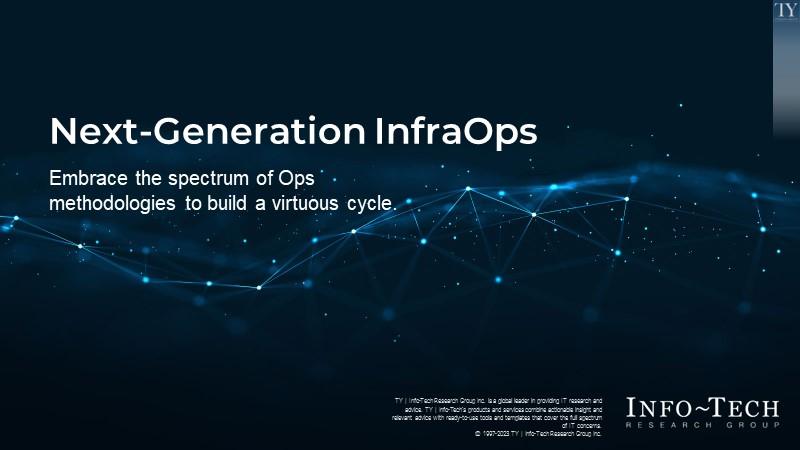
Next-Generation InfraOps
- Traditional IT capabilities, activities, organizational structures, and culture need to adjust to leverage the value of cloud, optimize spend, and manage risk.
- Different stakeholders across previously separate teams rely on one another more than ever, but rules of engagement do not yet exist.
Our Advice
Critical Insight
- By defining your end goals and framing solutions based on the type of visibility and features you need, you can enable speed and reliability without losing control of the work.
Impact and Result
- Understand the xOps spectrum and what approaches benefit your organization.
- Make sense of the architectural approaches and enablement tools available to you.
- Evolve from just improving your current operations to a continuous virtuous cycle of development and deployment.
Next-Generation InfraOps Research & Tools
Besides the small introduction, subscribers and consulting clients within this management domain have access to:
1. Next-Generation InfraOps Storyboard – A deck that will help you use Ops methodologies to build a virtuous cycle.
This storyboard will help you understand the spectrum of different Agile xOps working modes and how best to leverage them and build an architecture and toolset that support rapid continuous IT operations
- Next-Generation InfraOps Storyboard
Further reading
Next-Generation InfraOps
Embrace the spectrum of Ops methodologies to build a virtuous cycle.
Executive summary
Your Challenge
IT Operations continue to be challenged by increasing needs for scale and speed, often in the face of constrained resources and time. For most, Agile methodologies have become a foundational part of tackling this problem. Since then, we've seen Agile evolve into DevOps, which started a trend into different categories of "xOps" that are too many to count. How does one make sense of the xOps spectrum? What is InfraOps and where does it fit in?
Common Obstacles
Ultimately, all these methodologies and approaches are there to serve the same purpose: increase effectiveness through automation and improve governance through visibility. The key is to understand what tools and methodologies will deliver actual benefits to your IT operation and to the organization as a whole.
Info-Tech's Approach
By defining your end goals and framing solutions based on the type of visibility and features you need, you can enable speed and reliability without losing control of the work.
- Understand the xOps spectrum and what approaches will benefit your organization.
- Make sense of the architectural approaches and enablement tools available to you.
- Evolve from just improving your current operations to a continuous virtuous cycle of development and deployment.
Info-Tech Insight
InfraOps, when applied well, should be the embodiment of the governance policies as expressed by standards in architecture and automation.
Project overview
|
Understand the xOps spectrum |
There are as many different types of "xOps" as there are business models and IT teams. To pick the approaches that deliver the best value to your organization and that align to your way of operating, it's important to understand the different major categories in the spectrum and how they do or don't apply to your IT approach. |
|---|---|
|
How to optimize the Ops in DevOps |
InfraOps is one of the major methodologies to address a key problem in IT at cloud scale: eliminating friction and error from your deliveries and outputs. The good news is there are architectures, tools, and frameworks you can easily leverage to make adopting this approach easier. |
|
Evolve to integration and build a virtuous cycle |
Ultimately your DevOps and InfraOps approaches should embody your governance needs via architecture and process. As time goes on, however, both your IT footprint and your business environment will shift. Build your tools, telemetry, and governance to anticipate and adapt to change and build a virtuous cycle between development needs and IT Operations tools and governance. |
The xOps spectrum
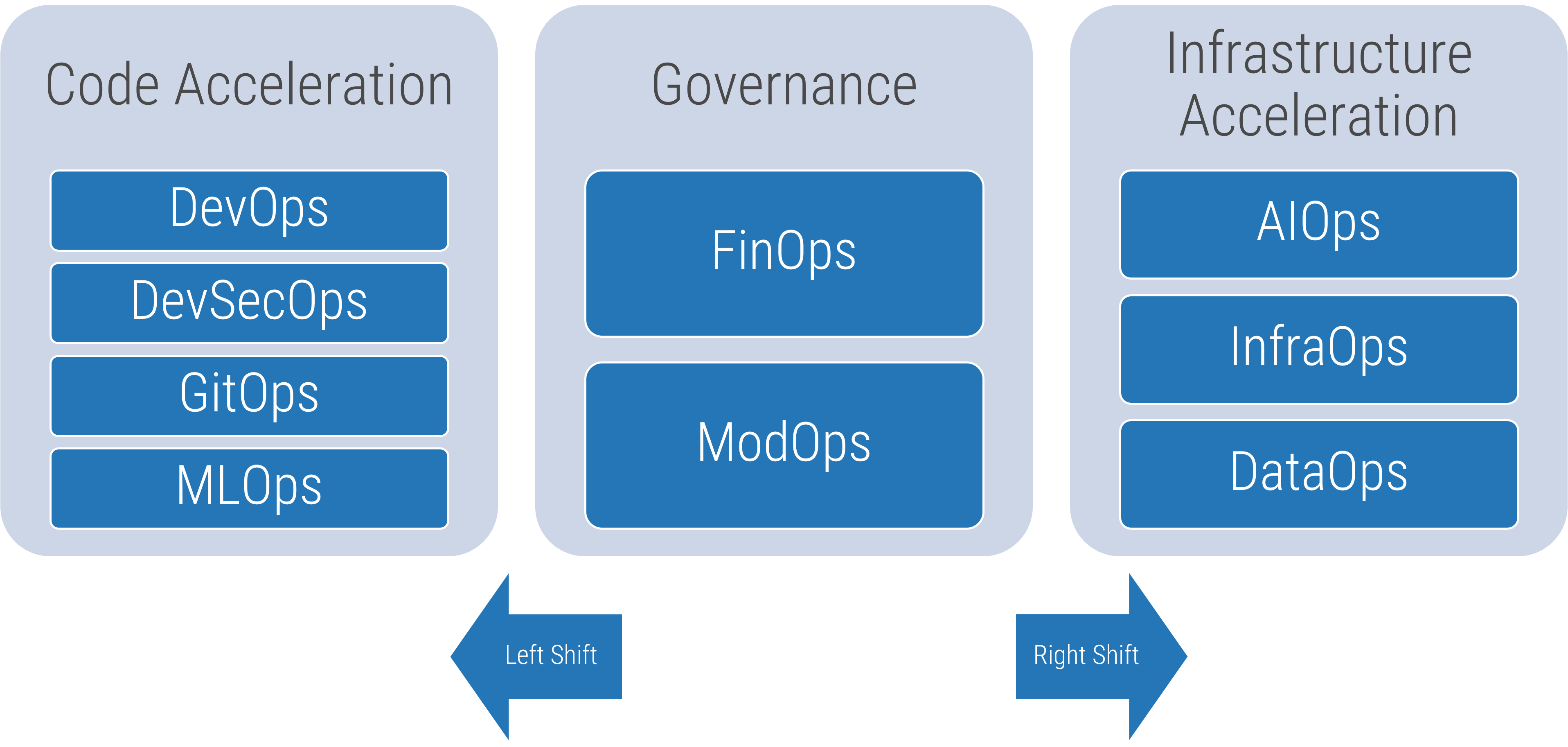
xOps categories
There is no definitive list of x's in the xOps spectrum. Different organizations and teams will divide and define these in different ways. In many cases, the definitions and domains of various xOps will overlap.
Some of the commonly adopted and defined xOps models are listed here.
Shift left? Shift right?
Cutting through the jargon
- Shifting left is about focusing on the code and development aspects of a delivery cycle.
- Shifting right is about remembering that infrastructure and tools still do matter.
Info-Tech Insight
Shifting left or right isn't an either/or choice. They're more like opposite sides of the same coin. Like the different xOps approaches, usually more than one shift approach will apply to your IT Operations.
IT Operations in the left-right spectrum
Shifting from executing and deploying to defining the guardrails and standards
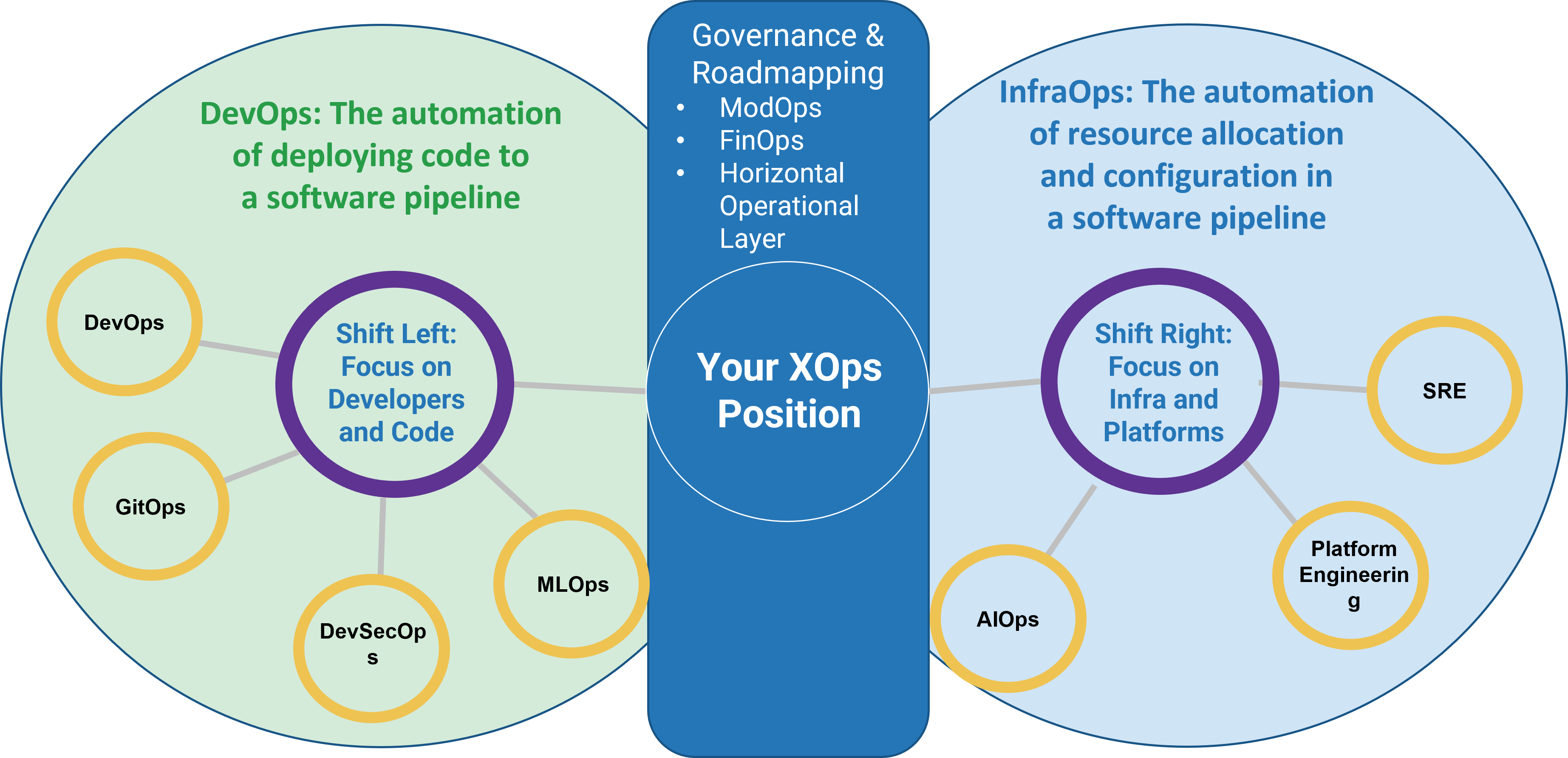
Take a middle-out approach
InfraOps and DevOps aren't enemies; they're opposite sides of the same coin.
- InfraOps is about the automation and standardization of execution. It's an essential element in any fully automated CI/CD pipeline.
- Like DevOps, InfraOps is built on similar values (the pillars of DevOps).
- It builds on the principle of Lean to focus on removing friction, or turn-and-type activities, from the pipeline/process.
- In InfraOps, one of the key methods for removing friction is through automation of the interstitia between different phases of a DevOps or CI/CD cycle.
Optimize the Ops in DevOps
Focus on eliminating friction
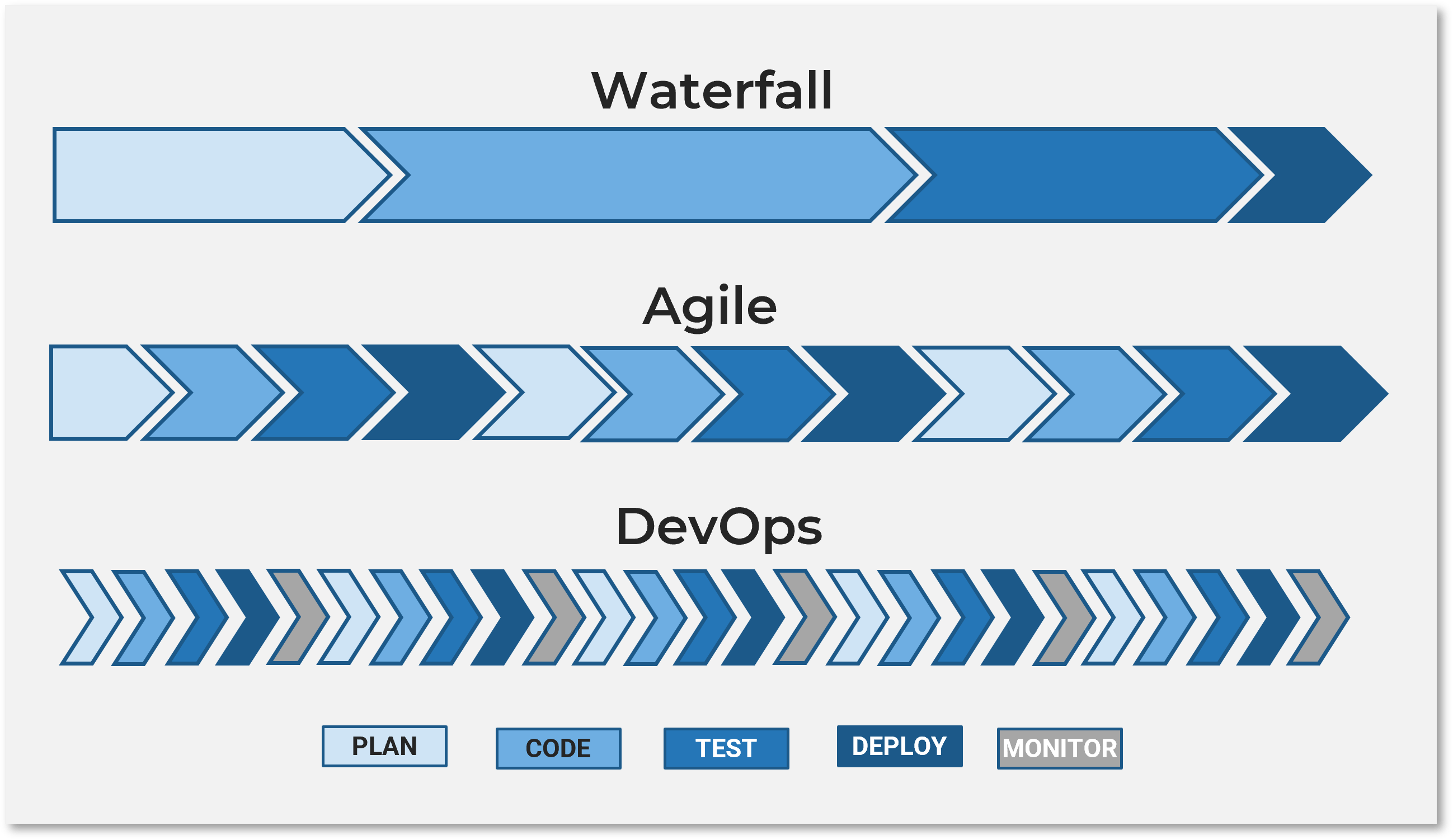
With the shift from execution to governing and validating, the role of deployment falls downstream of IT Operations.
IT Operations needs to move to a mindset that focuses on creating the guardrails, enforced standards, and compliance rules that need to be used downstream, then apply those standards using automation and tooling to remove friction and error from the interstitia (the white spaces between chevrons) of the various phases.
InfraOps tools
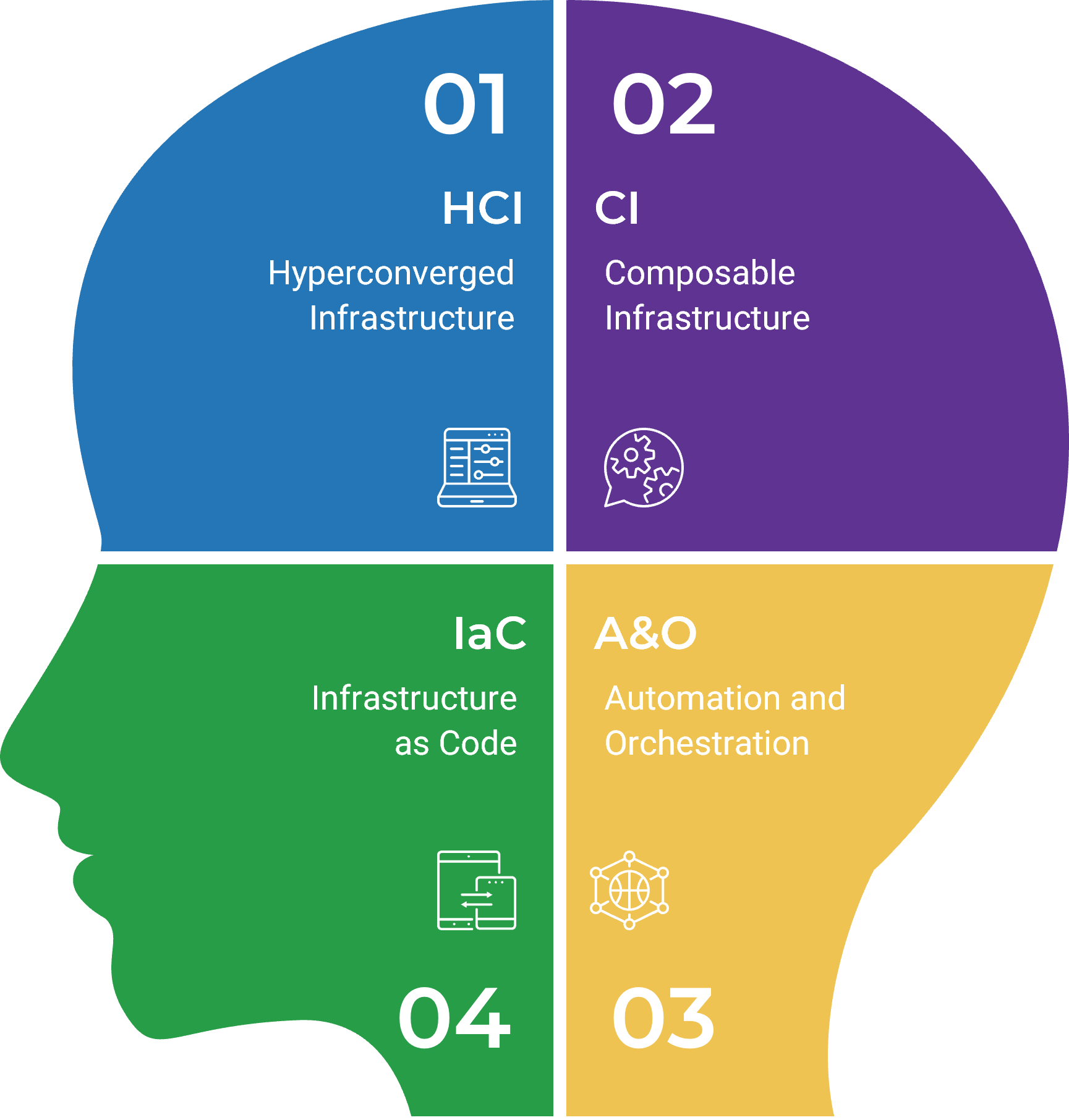
Info-Tech Insight
Your tools can be broken into two categories:
- Infrastructure Architecture
- HCI vs. CI
- Automation Tooling
- IaC and A&O
Keep in mind that while your infrastructure architecture is usually an either/or choice, your automation approach should use any and all tooling that helps.
Infrastructure approach
-
Hyperconverged
-
Composable
Hyperconverged Infrastructure (HCI)
Hyperconvergence is the next phase of convergence, virtualizing servers, networks, and storage on a single server/storage appliance. Capacity scales as more appliances are added to a cluster or stack.
The disruptive departure:
- Even though servers, networks, and storage were each on their own convergence paths, the three remained separate management domains (or silos). Even single-SKU converged infrastructures like VCE Vblocks are still composed of distinct server, network, and storage devices.
- In hyperconvergence, the silos collapse into single-software managed devices. This has been disruptive for both the vendors of technology solutions (especially storage) and for infrastructure management.
- Large storage array vendors are challenged by hyperconvergence alternatives. IT departments need to adapt IT skills and roles away from individual management silos and to more holistic service management.

Info-Tech Insight
HCI follows convergence trends of the past ten years but is also a departure from how IT infrastructure has traditionally been provisioned and managed.
HCI is at the same time a logical progression of infrastructure convergence and a disruptive departure.
Hyperconverged (HCI) – SWOT
HCI can be the foundation block for a fully software defined data center, a prerequisite for private cloud.
Strengths
- Potentially lower TCO through further infrastructure consolidation, reducing CapEx and OpEx expenditures through facilities optimization and cost consolidation.
- Operations in particular can be streamlined, since storage, network connections, and processors/memory are all managed as abstractions via a single control pane.
- HCI comes with built-in automation and analytics that lead to quicker issue resolution.
Opportunities
- Increased business agility by paving the way for a fully software defined infrastructure stack and cloud automation.
- Shift IT human assets from hardware asset maintainers and controllers to service delivery managers.
- Better able to compete with external IT service alternatives.
- Move toward a hybrid cloud service offering where the service catalog contains both internal and external offerings.
Key attributes of a cloud are automation, resource elasticity, and self-service. This kind of agility is impossible if physical infrastructure needs intervention.
Info-Tech Insight
Virtualization alone does not a private cloud make, but complete stack virtualization (software defined) running on a hands-off preconfigured HCI appliance (or group of appliances) provides a solid foundation for building cloud services.
Hyperconverged (HCI) – SWOT
Silo-busting and private cloud sound great, but are your people and processes able to manage the change?
Weaknesses
- HCI typically scales out linearly (CPU & storage). This does not suit traditional scale-up applications such as high-performance databases and large-capacity data warehouses.
- Infrastructure stacks are perceived as more flexible for variable growth across segments. For example, if storage is growing but processing is not, storage can scale separately from processing.
Threats
- HCI will be disruptive to roles within IT. Internal pushback is a real threat if necessary changes in skills and roles are not addressed.
- HCI is not a simple component replacement but an adoption of a different kind of infrastructure. Different places in the lifecycles for each of storage, network, and processing devices could make HCI a solution where there is no immediate problem.
In traditional infrastructure, performance and capacity are managed as distinct though complementary jobs. An all-in-one approach may not work.
Composable Infrastructure (CI)
- Composable infrastructure in many ways represents the opposite of an HCI approach. Its focus is on further disaggregating resources and components used to build systems.
- Unlike traditional cloud virtual systems, composable infrastructure provides virtual bare metal resources, allowing tightly coupled resources like CPU, RAM, and GPU – or any device/card/module – to be released back and forth into the resource pool as required by a given workload.
- This is enabled by the use of high-speed, low-latency PCI Express (PCI-e) and Compute Express Link (CXL) fabrics that allow these resources to be decoupled.
- It also supports the ability to present other fabric types critical for building out enterprise systems (e.g. Ethernet, InfiniBand).
- Accordingly, CI systems are also based on next-generation network architecture that supports moving critical functions to the network layer, which enables more efficient use of the application-layer resources.
Composable Infrastructure (CI)
- CI may also leverage network-resident data/infrastructure processing units (DPUs/IPUs), which offload many network, security, and storage functions.
- As new devices and functions become available, they can be added into the catalog of resources/functions available in a CI pool.
Use Case Example: Composable AI flow
Data Ingestion > Data Cleaning/Tagging > Training > Conclusion
- At each phase of the process, resources, including specialized hardware like memory and GPU cores, can be dynamically allocated and reallocated to the workload on demand
Composable Infrastructure (CI)
Use cases and considerations
Where it's useful
- Enable even more efficient allocation/utilization of resources for workloads.
- Very large memory or shared memory requirements can benefit greatly.
- Decouple purchasing decisions for underlying resources.
- Leverage the fabric to make it easier to incrementally upgrade underlying resources as required.
- Build "the Impossible Server."
Considerations
- Requires significant footprint/scale to justify in many cases
- Not necessarily good value for environments that aren't very volatile and heterogeneous in terms of deployment requirements
- May not be best value for environments where resource-stranding is not a significant issue
Info-Tech Insight
Many organizations using a traditional approach report resource stranding as having an impact of 20% or more on efficiency. When focusing specifically on the stranding of memory in workloads, the number can often approach 40%.
The CI ecosystem
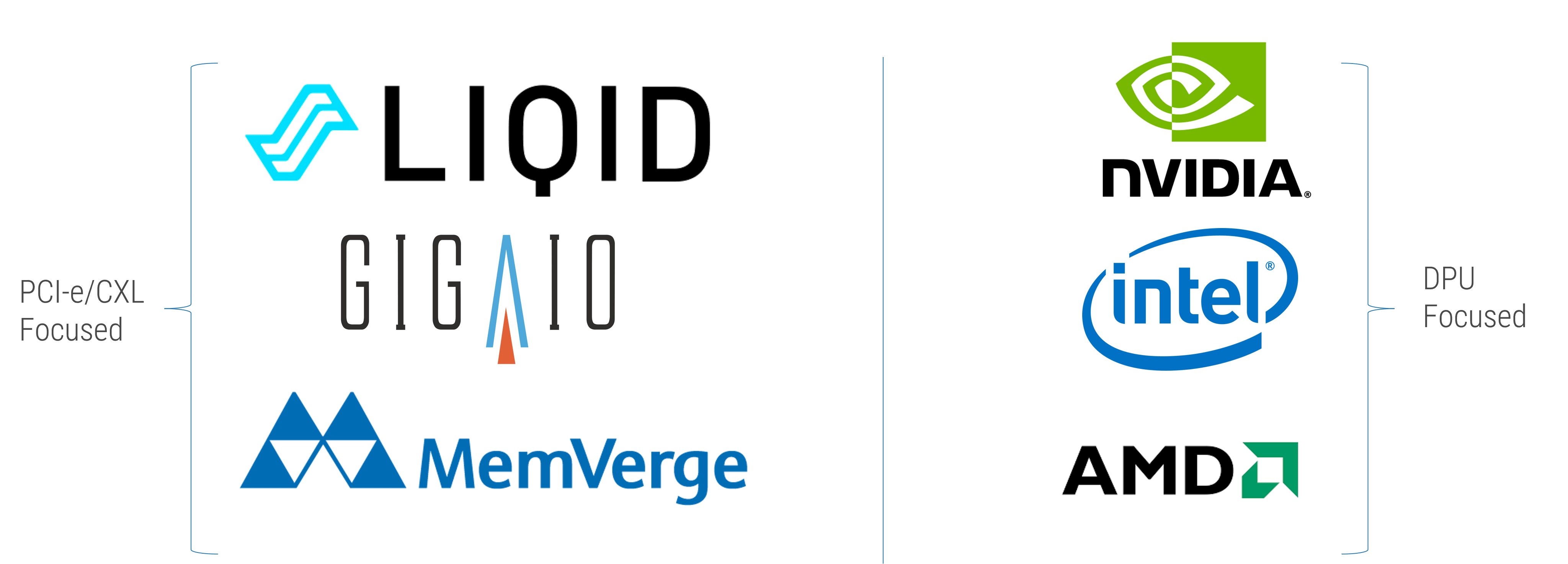
- The CI ecosystem has many players, large and small!
- Note that the CI ecosystem is dependent on a large ecosystem of underlying enablers and component builders to support the required technologies.
Understanding the differences
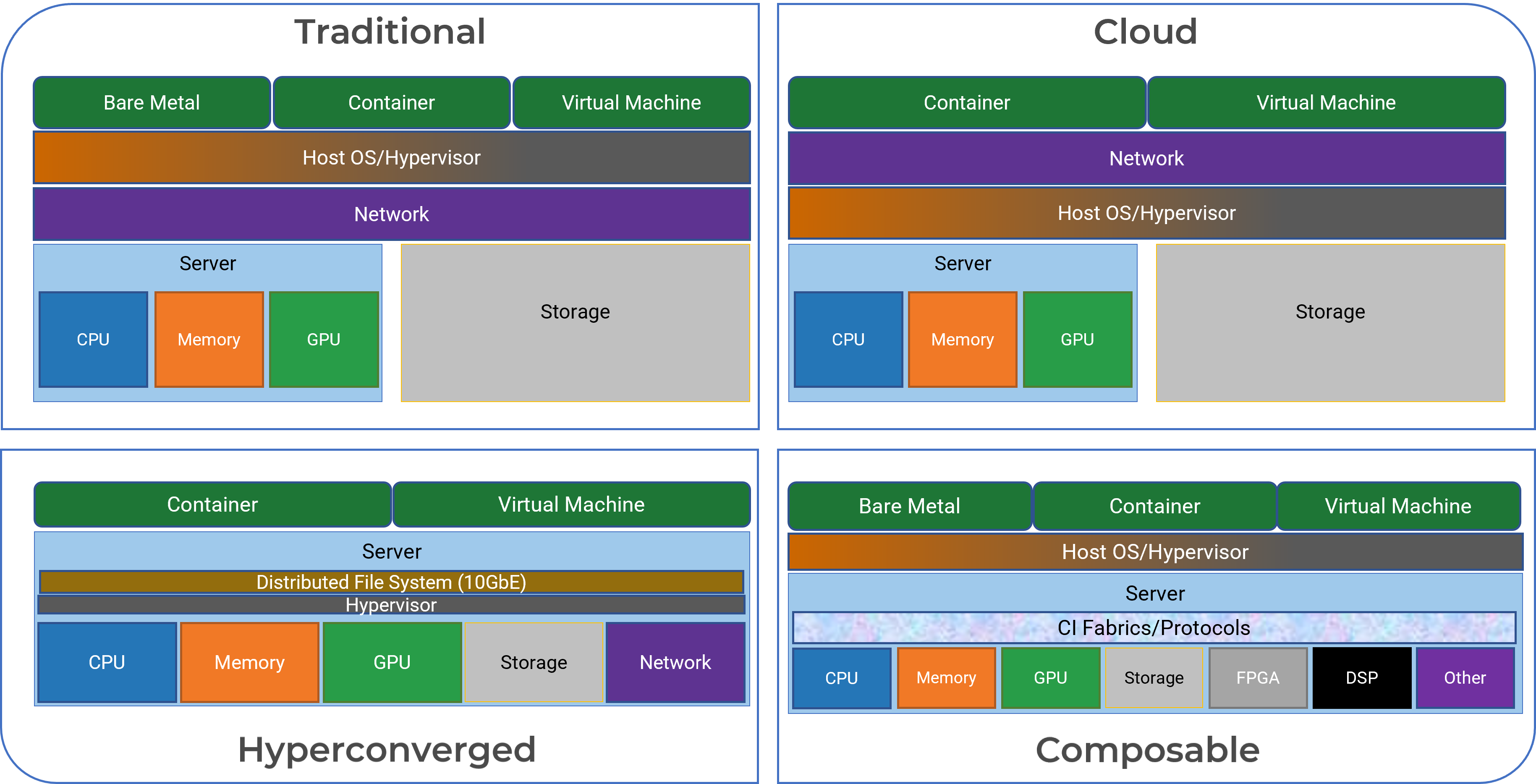
Automation approach
- Infrastructure as Code
- Automation & Orchestration
- Metaorchestration
Infrastructure as Code (IaC)
Infrastructure as code (IaC) is the process of managing and provisioning computer data centers through machine-readable definition files rather than physical hardware configuration or interactive configuration tools.
Before IaC, IT personnel would have to manually change configurations to manage their infrastructure. Maybe they would use throwaway scripts to automate some tasks, but that was the extent of it.
With IaC, your infrastructure's configuration takes the form of a code file, making it easy to edit, copy, and distribute.
Info-Tech Insight
IaC is a critical tool in enabling key benefits!
- Reduced costs
- Increased scalability, flexibility, and speed
- Better consistency and version control
- Reduced deployment errors
Infrastructure as Code (IaC)
- IaC uses a high-level descriptive coding language to automate the provisioning of IT infrastructure. This eliminates the need to manually provision and manage servers, OS, database connections, storage, and other elements every time we want to develop, test, or deploy an application.
- IaC allows us to define the computer systems on which code needs to run. Most commonly, we use a framework like Chef, Ansible, Puppet, etc., to define their infrastructure. These automation and orchestration tools focus on the provisioning and configuring of base compute infrastructure.
- IaC is also an essential DevOps practice. It enables teams to rapidly create and version infrastructure in the same way they version source code and to track these versions so as to avoid inconsistency among IT environments that can lead to serious issues during deployment.
- Idempotence is a principle of IaC. This means a deployment command always sets the target environment into the same configuration, regardless of the environment's starting state.
- Idempotency is achieved by either automatically configuring an existing target or discarding the existing target and recreating a fresh environment.
Automation/Orchestration
Orchestration describes the automated arrangement, coordination, and management of complex computer systems, middleware, and services.
This usage of orchestration is often discussed in the context of service-oriented architecture, virtualization, provisioning, converged infrastructure, and dynamic data center topics. Orchestration in this sense is about aligning the business request with the applications, data, and infrastructure.
It defines the policies and service levels through automated workflows,
provisioning, and change management. This creates an application-aligned infrastructure that can be scaled up or down based on the needs of each application.
As the requirement for more resources or a new application is triggered, automated tools now can perform tasks that previously could only be done by multiple administrators operating on their individual pieces of the physical stack.
Orchestration also provides centralized management of the resource pool, including billing, metering, and chargeback for consumption. For example, orchestration reduces the time and effort for deploying multiple instances of a single application.
Info-Tech Insight
Automation and orchestration tools can be key components of an effective governance toolkit too! Remember to understand what data can be pulled from your various tools and leveraged for other purposes such as cost management and portfolio roadmapping.
Automation/Orchestration
There are a wide variety of orchestration and automation tools and technologies.
Configuration Management
|
Configuration Management |
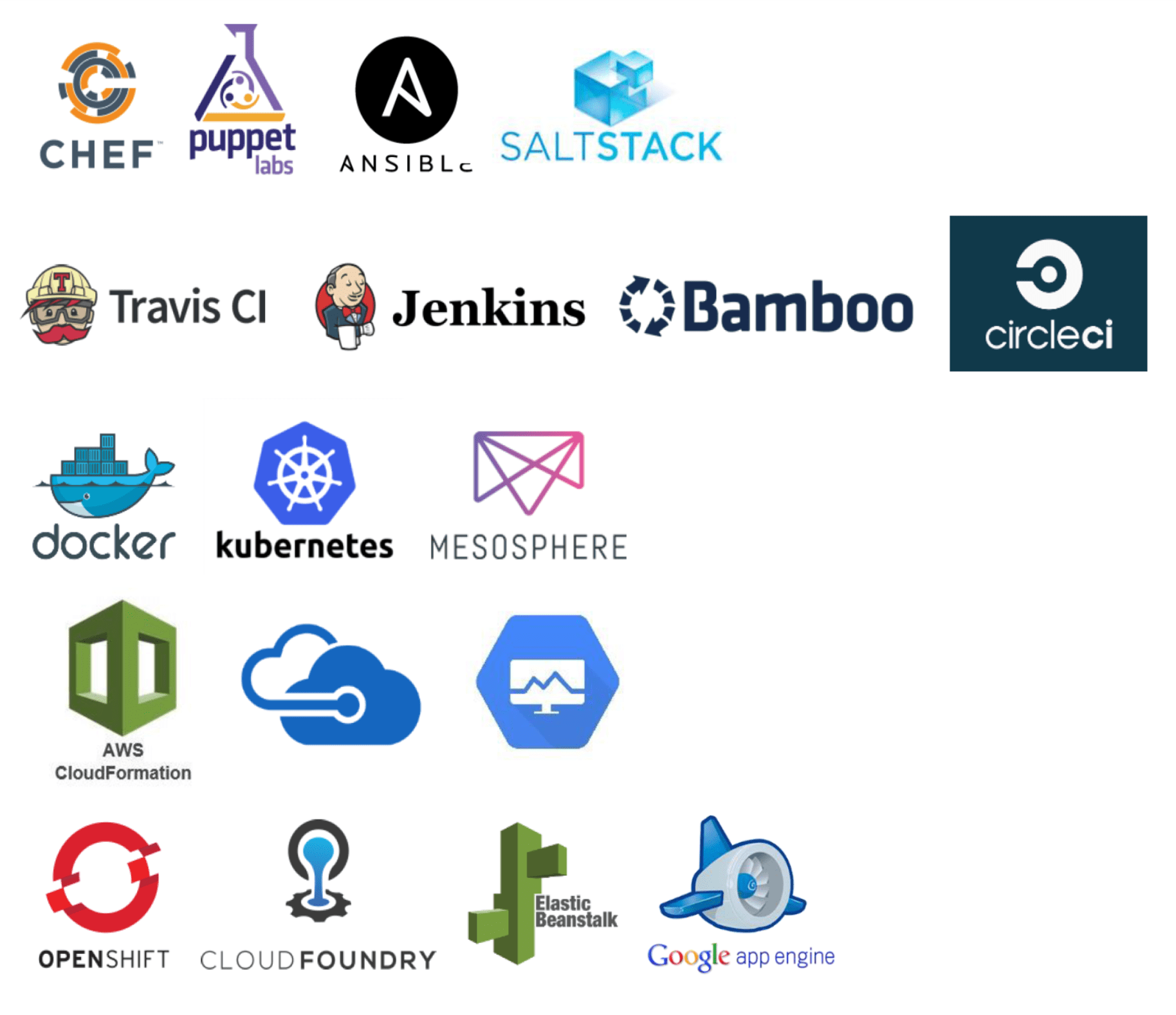
|
|---|---|
|
CI/CD |
|
|
Container |
|
|
Cloud-Specific |
|
|
PaaS |
Info-Tech Insight
Automation and orchestration tools and software offerings are plentiful, and many of them have a different focus on where in the application delivery ecosystem they provide automation functionality.
Often there are different tools for different deployment and service models as well as for different functional phases for each service model.
Automation/Orchestration
Every tool focuses on different aspects or functions of the deployment of resources and applications.
- Resources
- Compute
- Storage
- Network
- Extended Services
- Platforms
- Infrastructure Services
- Web Services
- Application Assets
- Images
- Templates
- Containers
- Code
Info-Tech Insight
Let the large ecosystem of tools be your ally. Leverage the right tools where needed and then address the complexity of tools using a master orchestration scheme.
Metaorchestration
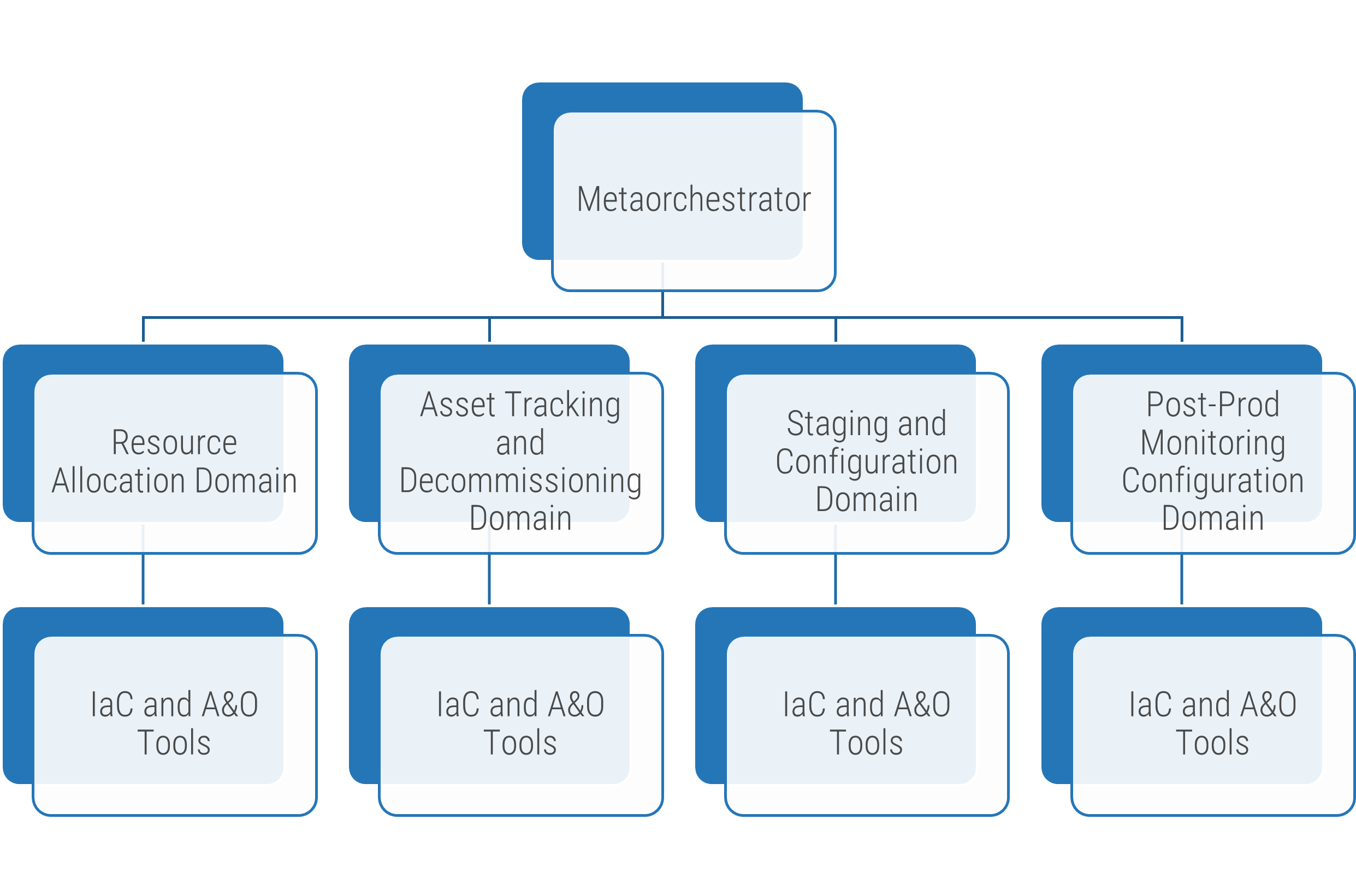
Additionally, most tools do not cover all aspects required for most automation implementations, especially in hybrid cloud scenarios.
As such, often multiple tools must be deployed, which can lead to fragmentation and loss of unified controls.
Many enterprises address this fragmentation using a cloud management platform approach.
One method of achieving this is to establish a higher layer of orchestration – an "orchestrator of orchestrators," or metaorchestration.
In complex scenarios, this can be a challenge that requires customization and development.
InfraOps tools ecosystem
| Toolkit | Pros | Cons | Tips |
|---|---|---|---|
| HCI | Easy scale out | Shift in skills required | Good for enabling automation and hybridization with current-gen public cloud services |
| CI | Maximal workload resource efficiency | Investment in new fabrics and technologies | Useful for very dynamic or highly scalable workloads like AI |
| IaC | Error reduction and standardization | Managing drift in standards and requirements | Leverage a standards and exception process to keep track of drift |
| A&O | Key enabler of DevOps automation within phases | Usually requires multiple toolsets/frameworks | Use the right tools and stitch together at the metaorchestration layer |
| Metaorchestration | Reduces the complexity of a diverse A&O and IaC toolkit | Requires understanding of the entire ecosystems of tools used | Key layer of visibility and control for governance |
Build a virtuous cycle
Remember, the goal is to increase speed AND reliability. That's why we focus on removing friction from our delivery pipelines.
- The first step is to identify the points of friction in your cycle and understand the intensity and frequency of these friction points.
- Depending on your delivery and project management methodology, you'll have a different posture of the different tools that make sense for your pipeline.
- For example, if you are focused on delivering raw resources for sysadmins and/or you're in a Waterfall methodology where the friction points are large but infrequent, hyperconverged is likely to delivery good value, whereas tools like IaC and orchestration may not be as necessary.
Info-Tech Insight
Remember that, especially in modern and rapid methodologies, your IT footprint can drift unexpectedly. This means you need a real feedback mechanism on where the friction moves to next.
This is particularly important in more Agile methodologies.
Activity: Map your IT operations delivery
Identify your high-friction interstitial points
- Using the table below, or a table modified to your delivery phases, map out the activities and tasks that are not standardized and automated.
- For the incoming and outgoing sections, think about what resources and activities need to be (or could be) created, destroyed, or repurposed to efficiently manage each cycle and the spaces between cycles.
| Plan | Code | Test | Deploy | Monitor | |
|---|---|---|---|---|---|
| Incoming Friction | |||||
| In-Cycle Friction | |||||
| Outgoing Friction |
Info-Tech Insight
Map your ops groups to the delivery cycles in your pipeline. How many delivery cycles do you have or need?
Good InfraOps is a reflection of governance policies, expressed by standards in architecture and automation.
Related Info-Tech Research
Evaluate Hyperconverged Infrastructure for Your Infrastructure Roadmap
- This Info-Tech note covers evaluation of HCI platforms.
- This Info-Tech blueprint covers organization of operations teams for various deployment and Agile modes.
Bibliography
Banks, Ethan, host. "Choosing Your Next Infrastructure." Datanauts, episode 094, Packet Pushers, 26 July 2017. Podcast.
"Composable Infrastructure Solutions." Hewlett Packard Canada, n.d. Web.
"Composable Infrastructure Technology." Liqid Inc., n.d. Web.
"DataOps architecture design." Azure Architecture Center, Microsoft Learn, n.d. Web.
Tan, Pei Send. "Differences: DevOps, ITOps, MLOps, DataOps, ModelOps, AIOps, SecOps, DevSecOps." Medium, 5 July 2021. Web.